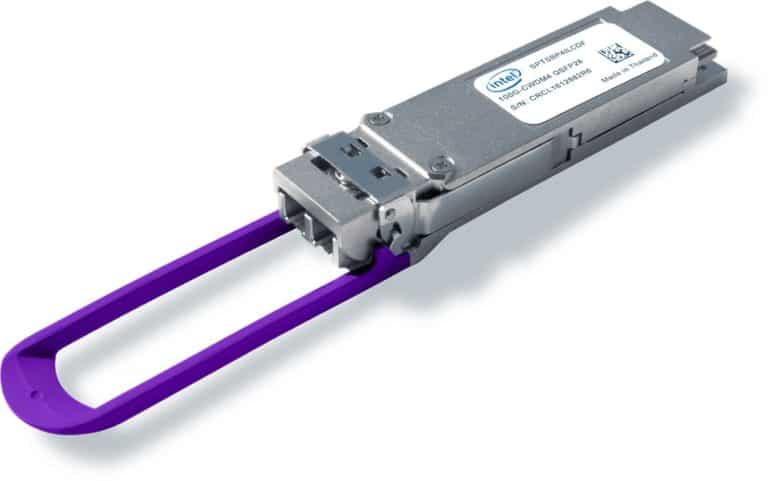From electronic signal to light: With its 400G transceiver, Intel is demonstrating a modulator that will support super-fast communication over cables from 500 meters to 10 km.
Following the success of the Silicon Photonics 100G (image), Intel today introduces the 400G transceiver. That piece of hardware has to convert electrical signals into light in order to enable super-fast communication. Intel is not the only one who wants to bridge the gap between electronic communication and light, but since the launch of the 100G it is said to be the most successful. The hardware giant would be the market leader for six consecutive quarters.
Simplicity trumps
With the 400G, Intel wants to further capitalize on that success. Where 100G transfer speeds can swallow up to 100Gbps, this increases fourfold by 400G to 400Gbps. In addition, Intel keeps prices under control.
Most competitors use a complex interplay of mirrors and lasers for their optical transceivers to modulate the electrical signal to an optical variant. Intel uses fewer components and opts for indium phosphate as a light source. Moreover, unlike most competitors, the device does not need to be in an airtight housing. Finally, Intel developed a manufacturing process that is in line with the classic production of silicon chips, and is therefore highly scalable and efficient in large volumes.
Demo
Intel demonstrated the hardware on its Interconnect Day, where it initially confirmed the arrival of the 500-metre variant. Other specimens that support longer cables are basically in the pipeline, with a 10 km version on the high-end side of the spectrum.
The 100G version of the Silicon Photonics-transceivers has been on the market since mid-2016 in a limited edition, and reached volume production a year later. Later, Intel introduced more powerful variants within the 100G lineup. It is not yet clear how quickly the 400G wide will become available, but it is likely that Intel has eliminated most of the teething troubles in recent years.
The transceivers are particularly interesting in a data centre context, where fast connections to the outside world are desirable. After all, things make it possible to connect a classic electronic environment directly to a fibre-optic cable.
This news article was automatically translated from Dutch to give Techzine.eu a head start. All news articles after September 1, 2019 are written in native English and NOT translated. All our background stories are written in native English as well. For more information read our launch article.